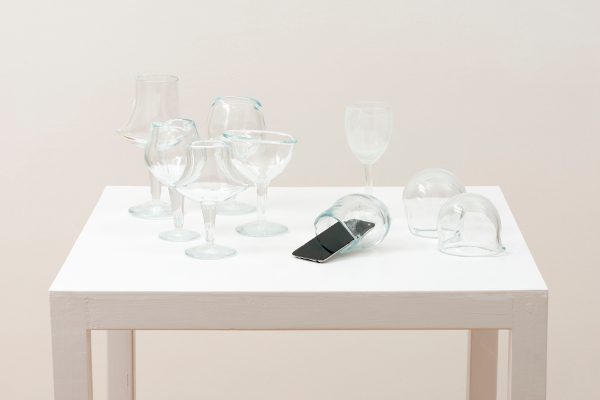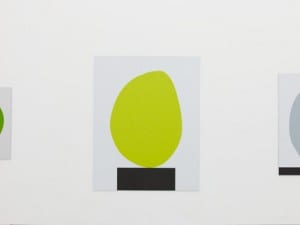Albert Einstein, when asked why time exists, answered “so that everything doesn’t happen at once.” Some Eastern cultures perceive time as a coil, travelling in cycles; others understand time as travelling through an eternal present, or as water from a spring: with the future underground, the present erupting, and the past all around us. In Western cultures time is invariably linear, and when visually documented, it almost always reads from left to right, such is the extent to which our understanding of the concept is intertwined with the language we use to describe it.
Turkish artist Cevdet Erek’s Alt: Üst at Bristol’s Spike Island (running until 13 April) initially subscribes to the linear reading of time, but on making the clockwise journey around the show, each of the aforementioned perceptions of time is in some way evident. Immediately inside the gallery door a cross-section of a 100 year-old cedar tree has been trimmed to the dimensions of an academic ruler.
To its left the centre ring of the tree is labelled 1914, and to the right its bark is marked NOW. In front of it, on a long table of Last Supper-dimensions, sits Ruler and Rhythm Studies (2007-2011), a collection of Perspex rulers which have been used to measure time. The rulers range from the personal to the political, some feature dates from the artist’s life, while Ruler coup (mini), (2011), marks the foundation of the Turkish Republic in 1923, and its three subsequent military coups of 1960, 1971, and 1980.
On another, Ruler 100 years (2011), the language used to mark the date changes from Arabic to Latin in 1928, the year that the Turkish Republic officially underwent that same change. Erek has divided the central gallery space horizontally, creating an upper and lower chamber. On ground level the low ceiling of scaffolding-supported plywood boarding combines with single-source lighting and repetitive techno-style music to create a subterranean, almost nightclub atmosphere. A streak of ultramarine LED light temporarily disrupts the darkness as it travels across the ceiling at regular intervals, determined by Bristol’s daylight hours during the time of the exhibition.
As the upper level Üst is to downstairs’ Alt, day is to night. The ceiling here, which is sky-lit, is double the height of the lower chamber. If Alt is a nightclub, then Üst is an open air squash court. The bare white walls of the gallery, the sky above, and the muffled music from the lower chamber reverberating into the soles of visitors’ feet provide a sense that this room is anything but empty.
The notches in the rulers, the ticking of the beats, the switching on and off of the travelling LED light display, they all speak of the markers we put in place to aid our understanding of time, but equally considerable at Alt: Üst is the attention Cevdet Erek has paid to the gaps between the notches, the silence between the beats, and the darkness before and after the light.
When one is lost in a repetitive rhythm – and Erek’s are quite mesmerising – it can be easy to forget the passing of time altogether, as if one has become lodged within a moment, eternal yet fleeting. The sudden silences, darknesses, and gaps between notches are time itself, rather than its markers, and it is these moments of nothingness that reveal themselves throughout the show, not least on one’s way out, when the rhythmic beat at the dark heart of Alt: Üst continues to boom through the gallery walls; a final reminder of time as our master, one that will continue long after we are no longer around to record its passing.
Alt: Üst runs until 13 April at Spike Island, Bristol. For more information visit www.spikeisland.org.uk.
Trevor H Smith
Credits
1. Cevdet Erek Jingle (2012).




